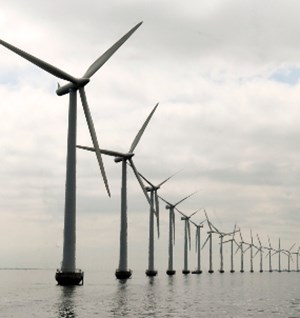Equinor, SSE Renewables to explore further development of world’s largest offshore wind farm
(WO) — Leading energy companies Equinor and SSE Renewables are carrying out early scoping work to explore options for developing a fourth phase, Dogger Bank D, of the world’s largest offshore wind farm.
The Dogger Bank D proposal would require a new development consent order to progress into construction and could add an additional 1.32 GW in fixed-bottom offshore wind capacity to the 3.6 GW already in construction with phases A, B and C of the project.
Dogger Bank D would be in the eastern zone of the Dogger Bank C lease area, more than doubling the utilization of existing acreage. The project’s progression remains subject to agreement with The Crown Estate.
Dogger Bank Wind Farm Project Director, Oliver Cass, said, “We’re in the early stages of looking at the technical feasibility of the grid and also hydrogen options for a potential fourth phase of Dogger Bank Wind Farm, and we’re looking forward to working with local, national and regional stakeholders over the coming months as we progress the project.
“Not only is this project a great opportunity to generate more affordable green energy for UK consumers and increase the resilience of our energy networks, it would also build on the economic and social legacy started by the first phases of the project which have created and supported thousands of UK jobs and resulted in more than £1 million being invested in coastal communities.”
The developers will release an initial scoping report in late March outlining ongoing work to explore the technical feasibility of deploying latest-available technology to bolster the UK’s renewable energy capacity. There are two options being explored for the energy generated by the offshore windfarm: a grid connection and/or green hydrogen production.
Grid connections vs. green hydrogen generation
The first would see power from Dogger Bank D connecting to a grid connection in Lincolnshire, where National Grid is installing new network infrastructure in response to the UK Government’s ambitions to generate 50 GW of offshore wind by 2030.
The second option developers are considering is the use of electricity produced by offshore wind to generate green hydrogen at a dedicated electrolysis facility in the Humber region. The facility, if developed, could become the UK’s largest green hydrogen project and, subject to supportive Government policy and supply chain alignment, could contribute to the UK Government’s green hydrogen ambitions.
VP Dogger Bank at Equinor, Halfdan Brustad, said, “Optimizing the Dogger Bank C lease area with an additional phase, Dogger Bank D, is in-line with Equinor’s strategy to further develop offshore wind projects in clusters such as the North Sea. Both the grid offtake and green hydrogen production options from Dogger Bank D would contribute to the UK’s net zero ambitions and emphasize Equinor’s ability to deliver a broad energy offering to the UK.”
The first three phases of Dogger Bank Wind Farm known as A, B and C are located more than 130 km off the Yorkshire coast and will generate enough renewable energy to power six million UK homes. A joint venture between SSE Renewables, Equinor and Vårgrønn*, SSE Renewables is leading on Dogger Bank construction and delivery while Equinor will operate the wind farm on completion.
* Vårgrønn is a joint venture between the Italian energy company Plenitude and the Norwegian energy entrepreneur and investor HitecVision.



